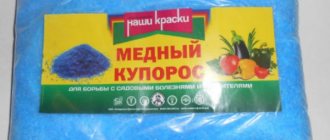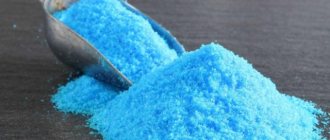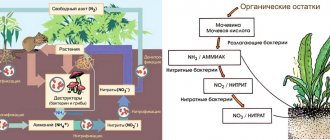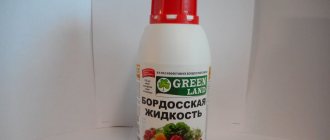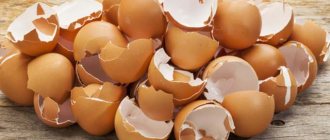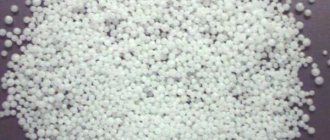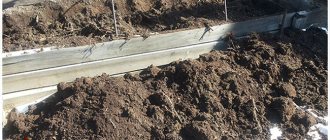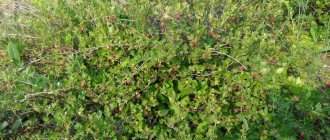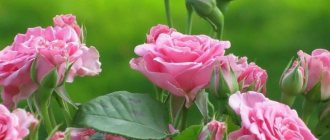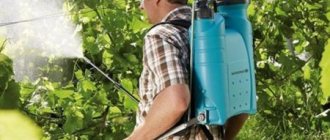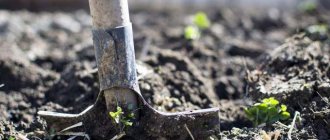Bordeaux mixture was invented at the end of the 19th century and has been very popular in the fight against various types of pests and diseases in all areas of gardening for more than a century.
The use of Bordeaux mixture in gardening helps in the treatment of hole spot, molinosis and other diseases in stone fruit crops. It is an excellent preventive measure.
Bordeaux mixture will relieve apple, quince, and pear trees from rot, scab, cancer and similar infections. For cherries, plums and apricots, this remedy will also be a salvation. It should be noted that these tree species are very sensitive, and an overdose of a product that contains copper will lead to the decay of the fruit.
How to use Bordeaux mixture?
Instructions for using Bodros liquid in the garden are accessible and understandable even to a novice gardener.
It consists of two components:
- copper sulfate (scientifically called copper sulfate);
- quicklime.
It won't be difficult to prepare it yourself. In addition to the substances mentioned, you must have two buckets with volumes of 5 and 10 liters. The best dishes are made of plastic, enamel or glass. This will eliminate a possible chemical reaction. It is not recommended to take an iron, zinc or aluminum tub - in combination with copper an undesirable reverse process will occur.
First, prepare the lime mortar in a ten-liter container:
- Pour the powder (the number of grams depends on the concentration) with hot water to extinguish the lime (there should be a mushy mass);
- After receiving the mixture, add cold water (5 liters) here.
In the second container we dilute copper sulfate:
- One hundred grams of powder is filled with the same amount of water as lime;
- Mix and pour into the lime liquid in a thin stream.
You need to pour vitriol into lime, but not vice versa. The concentration of the resulting mixture should be blue. The amount of copper is checked using litmus or any iron object.
There should be no red coating on them; if there is one, then a little lime should be added. Red coating means a high copper content, and this contributes to the “burning” of the leaves.
The mixture can be stored for no more than a day; the sooner you spray it on the trees, the better the result will be. If it is necessary to preserve the substance for two or three days, add 10 g of sugar and mix everything.
Using Bordeaux mixture in the garden: against which plant diseases is it most effective?
In gardening, Bordeaux mixture is used against the following, usually fungal diseases of various crops:
- on pomaceous plants (apple, pear, quince) against moniliosis (fruit rot) , scab and other spots;
- on stone fruits (apricot, plum, peach, cherry and sweet cherry) from clasterosporiosis, peach leaf curl , coccomycosis , moniliosis (monilial burn) ;
- on berry bushes (currants, gooseberries, raspberries, strawberries and blackberries) from anthracnose, septoria, rust and other leaf spots;
- on ornamental shrubs and flower crops (for example, roses and hydrangeas) against rust and other spots.
- in viticulture for protection against mildew (downy mildew) , anthracnose , black rot, rubella, cercospora, melanosis, etc.;
- on vegetables (potatoes, tomatoes, cucumbers, watermelons, melons, beets, onions) against late blight , anthracnose, rust, mildew , cercospora, macrosporiosis, alternaria and similar diseases.
By the way! The main advantage of treatment with Bordeaux mixture compared to copper sulfate is that it has a neutral reaction, which means it does not burn the leaves.
Although it is worth saying that you can prepare a fairly gentle solution of copper sulfate.
Concentration of the solution depending on the purpose of treatment
The percentage of solution depends on the purpose of its processing:
- A 1% solution is used during the growing season. The number of sprays is no more than four. To prepare it, take 150 g of lime and 100 g of copper per 10 liters.
- A 3% solution helps until the kidneys appear. It is used once a season. For the same amount of water as for a one percent solution, take 400 g of lime and 300 g of vitriol.
The classic combination in the solution is the ratio of 1% copper (vitriol) and the same lime.
To obtain a high-quality liquid, the components for its preparation are taken fresh. Drugs that have been in use for several years may not give the desired effect.
The consumption for using ready-made Bordeaux mixture in gardening is calculated depending on the area of the plot. Trees and large shrubs require 15 liters per 100 square meters. m, small bushes take three times less solution for the same volume of land.
The use of a stronger concentration is allowed only before the buds open. After this, the strongest dosage should not exceed 3%.
Bordeaux mixture is not able to penetrate inside trees, so it is intended only for the treatment of fungal infections.
There is also a separate dosage of the solution for different types of trees. For example, apple and pear trees are sprayed with 1% Bordeaux mixture six times during the growing season. Fruits can be eaten two weeks after processing.
In early spring, treating plants with Bordeaux mixture will relieve pome crops from scab, peaches from curl, and stone fruit trees will be cured from coccomycosis and moniliosis.
Application of Bordeaux mixture in autumn
It is much easier to work with a product that contains lime in the spring. At this time, the leaves on the trees and shrubs have not yet opened, and tender greenery does not suffer from the burning substance.
But insects, their larvae, and fungal spores die under the influence of Bordeaux mixture. The garden has the opportunity to bloom healthy buds and buds for flowering without threat.
In autumn, Bordeaux mixture is used to disinfect bushes and trees prepared for wintering. There is no point in spraying autumn foliage with the solution. You need to wait until the leaves fall (preferably after the first frost) and only then spray.
Fungal spores collected during rains will immediately die. The larvae of harmful insects will also suffer, since their delicate bodies will not be able to withstand the burning mixture.
How to work with Bordeaux mixture?
Safety precautions when using Bordeaux mixture:
- Do not mix the substance with soap;
- interaction with other fungicidal drugs is prohibited;
- not used during flowering;
- It is not recommended to use for budding. Bordeaux mixture reduces survival rate;
- last use is carried out at least 14 days before harvesting;
- It is better to keep animals away from the sprayed area for about 6 hours;
- dangerous to use in bad weather. In case of wind, rain or dew, the procedure should be postponed;
- processing is carried out with gloves, otherwise skin irritation may occur;
- the face must be protected with a respirator to avoid damage to the mucous membranes;
- carefully monitor the concentration of the solution: if it is oversaturated, then burns will remain on the leaves;
- after treating fruits with liquid, they are not allowed to be eaten for about two weeks - the ingestion of this chemical composition into the body can cause poisoning;
- Before eating the fruit after it has been treated with Bordeaux mixture, it should be thoroughly rinsed with running water.
The use of Bordeaux mixture in gardening in the fall is carried out to prevent tree diseases. The most suitable option would be a 3% composition. In this case, the time of harvest should be taken into account. If Bordeaux mixture is used for trees, then the last spraying should be 15 days, and for shrubs three weeks before harvesting the fruits.
Bordeaux mixture is one of the most effective remedies in the fight against various garden misfortunes. Like any chemical, it has its pros and cons. If you follow all the rules for using Bordeaux mixture and safety precautions, the substance will become an indispensable assistant in your summer cottage, and a rich harvest will be a reward for your painstaking work.
Advantages and possible disadvantages
The drug has many advantages, which is why it gained its popularity. The main advantages include:
- low cost (especially if you prepare the product yourself);
- ability to persist on leaves;
- relative safety;
- neutral pH;
- versatility.
There are also disadvantages to using Bordeaux mixture:
- difficulty in preparation;
- the need for personal protective equipment during spraying;
- if the mixture is prepared incorrectly, it can harm the plants;
- With frequent use, copper accumulates in the soil.
Treating the garden with Bordeaux mixture
We have already written about. Today we’ll tell you more about the Bordeaux mixture. So, gardeners often ask: Why treat the garden with Bordeaux mixture?
Treating the spring garden with Bordeaux weed is the main protective measure against fungal diseases. Pome and stone fruit crops are often affected by scab, coccomycosis, moniliosis and other fungal diseases. To protect apple, pear, and cherry trees, gardeners carry out blue spraying in early spring with a 3% Bordeaux solution.
When to spray with Bordeaux mixture
The garden should be sprayed with 3% Bordeaux mixture until the buds open. Specific dates will depend on weather conditions. The sooner the snow melts and warm weather arrives, the sooner the garden processing time will shift.
Repeated treatment with 1% Bordeaux mixture is carried out in the garden when buds appear on the trees.
Rules for processing Bordeaux garden:
- Spraying should not be carried out in windy weather,
- it is impossible to carry out Bordeaux treatment in wet weather,
- in gardens where trees are not resistant to fungal diseases, treatment with copper preparations should be regular,
- Spraying with Bordeaux must be carried out in a protective suit, goggles and a respirator.
How to prepare Bordeaux mixture
Bordeaux mixture is a powder for preparing a working solution. Bordeaux mixture consists of 2 preparations: lime and copper sulfate.
Typically, Bordeaux mixture is sold in stores in boxes with instructions for preparing the solution.
How to prepare a 3% solution of Bordeaux mixture
For a 3% Bordeaux solution, you need to take 300 g of copper sulfate and 400 g of lime. In separate plastic containers, vitriol is diluted in 1 liter of water and lime in 9 liters. As soon as the copper sulfate crystals dissolve, you need to pour the blue copper solution into the milk of lime (dissolved lime) in a thin stream.
Remember: you need to pour copper sulfate into the lime solution, and not vice versa!
Trees should be treated with a 3% concentration of Bordeaux solution before buds open!
How to prepare a 1% solution of Bordeaux mixture
To prepare a 1% Bordeaux solution, you need to take 100 g of copper sulfate and 150 g of lime per 10 liters of water. Copper sulfate is dissolved in a separate container and then poured into lime milk in a thin stream.
Treatment with a 1% Bordeaux solution is carried out during the growing season of plants.
Useful video
A video review from a famous expert will help you learn more about preparing Bordeaux mixture at home.
The use of Bordeaux mixture is one of the most effective ways to prevent and treat fungal diseases that affect crop plants. In addition to protective properties, the mixture has a stimulating effect. In order not to harm the plant and soil, the use of Bordeaux mixture must be carried out in strict accordance with the instructions for the drug and the consumption rates of the substance.
Previous
Tree care
